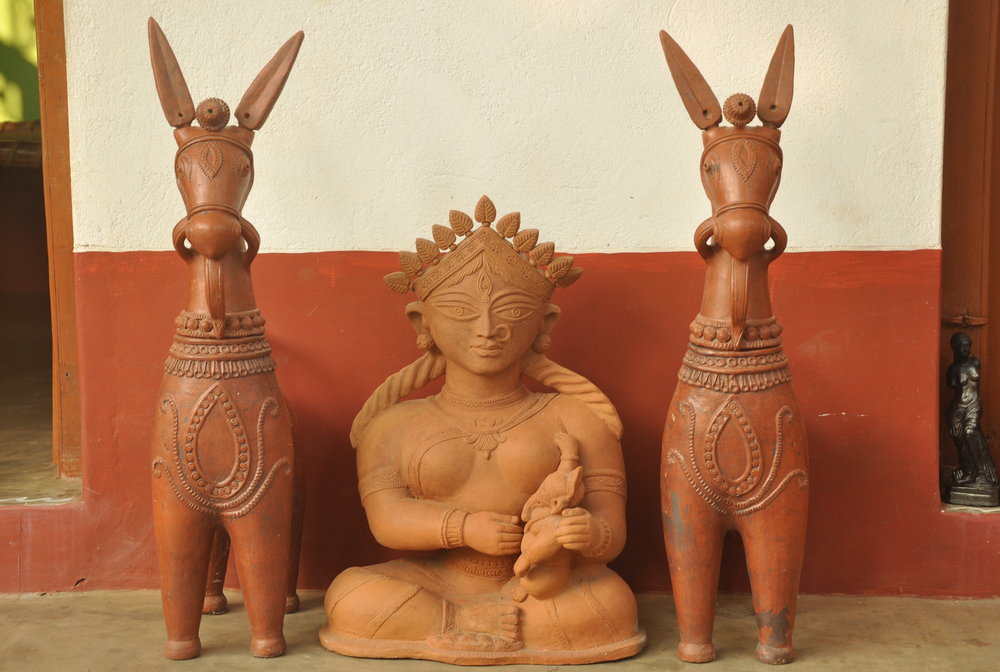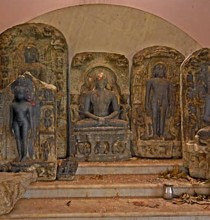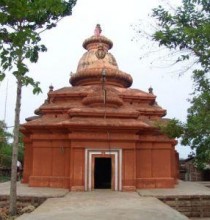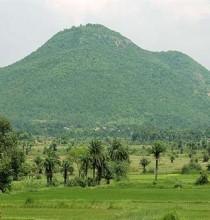
Terracotta of Bankura is one of the first attempts of man at clay modelling that has been perfected with time. Baked in sun and burnt in mud kilns with dry eucalyptus leaves, the earthly ensembles in dull ochre or red are beauteous caricatures. Terracotta has received the Geographical Indication (GI) tag.
The simple yet dynamic terracotta artistry of Panchmura has its origin in religious ritual. The structure of the 'Bankura Horse' has been so fashioned to symbolize a mark of devotion and valour. Panchmura offers a wide range of terracotta products from animal to human figurines as well as utility, home décor and jewellery. There are around 270 terracotta artists in Panchmura.
Government of West Bengal's Department of Micro, Small and Medium Enterprises & Textiles, in association with UNESCO, has developed Rural Craft Hub in Panchmura. One can participate in craft-making workshops, learn the history of the craft and explore the artefacts at the Folk Art Centre.
Train from Howrah to Bishnupur or Bankura takes about 3 hours. Panchmura is 23 kms from Bishnupur. From Kolkata it is about a 4 hours drive.




There is WBTDC lodge in Bishnupur with 29 well furnished rooms. Moreover there are a range of hotels and lodges available in Bishnupur as well as Bankura town. One can also stay at Panchmura Resource Centre.
A two storied Resource Centre is maintained by the artists has a large hall dedicated for artisan meets and a display cum sales area for artifacts.
There are 2 guest rooms on the first floor with basic amenities.

Terracotta is one of the ancient manifestations of human creativity. The simple yet dynamic artistry of Panchmura has ritualistic origin. This craft started with the rise in the popularity of the local serpent deity Manasa. Clay horses were offered to the village deities once wishes were fulfilled. Even today the rural communities continue with the practice of offering the terracotta figures as token of their devotion. The Malla kings made the Terracotta art of Bishnupur popular by building terracotta temples all over the place. The temples served a dual purpose for them by being a place of worship on one hand and that of shelter for warriors on the other. The ubiquitous terracotta structures with their apparent subtle and artistic façade were rock solid inside. The kings brought the craftsmen from Panchmura for building these temple and that marked the beginning of Bishnupur Terracotta tradition.